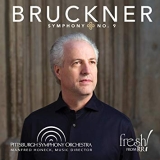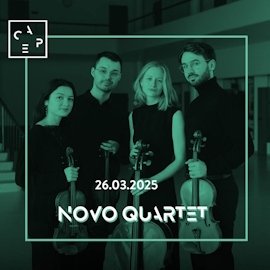 Anton Bruckner: Symphonie Nr. 9 (Novak Edition); Pittsburgh Symphony Orchestra, Manfred Honeck; 1 SACD Reference Recording FR-733; Aufnahme 02/2018, Veröffentlichung 23/08/20199 (63') – Rezension von Remy Franck
Anton Bruckner: Symphonie Nr. 9 (Novak Edition); Pittsburgh Symphony Orchestra, Manfred Honeck; 1 SACD Reference Recording FR-733; Aufnahme 02/2018, Veröffentlichung 23/08/20199 (63') – Rezension von Remy Franck
Diese Live-Einspielung der Neunten Bruckner ist überaus faszinierend und zeigt, welche Einsicht, welche Kraft und welchen zutiefst musikalischen Atem der Dirigent Manfred Honeck hat.
Die Symphonie beginnt sehr bedrohlich und teilweise auch mysteriös. Honeck hat bereits im ersten Satz ein Zitat aus dem Miserere der d-Moll-Messe gefunden, das im letzten Satz ausführlich zitiert wird. Das ist aber nur ein Element von vielen, die Honecks Interpretation so besonders und so logisch machen. Er erklärt die ganze Verwandlung vom anfänglichen Todesmarsch über lyrisch-emphatische Passagen bis hin zum Triumph über den Tod mit allen Varianten von Unsicherheit, Todesangst, Ehrfurcht und Anbetung, aber auch Euphorie im Kontrast zu unbeschreiblicher Leere. Das Pittsburgh Symphony spielt grandios und neben den vielen sorgsam herausgearbeiteten Details ist die Klangpracht ein wichtiges Charakteristikum der Aufnahme.
Den zweiten Satz, ein Scherzo, bezeichnet Honeck im Textheft als exzentrisch und dämonisch. Er dirigiert ihn sehr, sehr schnell und mit wahrhaft teuflischem Elan. Dem Trio gibt er einen Touch Shakespeare, wie er sagt, es sei « schattenhaft und schelmisch … Alles huscht und fliegt. » Und genau das empfindet der Hörer hier. Eine Höllenfahrt!
Den letzten Satz hat Bruckner laut Honeck rundum ums Agnus Dei aufgebaut, wobei sehr interessant und innovierend ist, wie ultimativ der Dirigent auch den Desaster-Charakter einzelner Passagen gestaltet. Beklemmend der Miserere-Gedanke, noch beklemmender die Beschreibung des Sündenfalls (peccata mundi), ehe der Dona nobis pacem-Gedanke den Schluss des Satzes prägt. Auch hier klingt plötzlich alles so ganz anders, voll erfüllt von Honecks profunder Analyse. Bedeutsam werden am Ende die drei Pizzicati als Symbol, so Honeck, für das Kreuzeichen, Vater, Sohn und Heiliger Geist.
This live recording of Bruckner’s Ninth is a fascinating document that shows Manfred Honeck’s insight, his musical strength and profound breathing. The symphony begins very threatening and mysteriously. Honeck already found a quotation from the Miserere from the D minor Mass in the first movement, which is quoted in detail in the last movement. But this is only one of many elements that make Honeck’s interpretation so special and logical. He explains the whole transformation from the initial death march to lyrical-emphatic passages and finally to the triumph over death with all its variations of insecurity, fear of death, reverence and worship, but also euphoria in contrast to indescribable emptiness. The Pittsburgh Symphony’s playing is gorgeous, and besides the many carefully worked out details, the splendour of sound is an important characteristic of the recording. Honeck describes the second movement, a scherzo, as eccentric and demonic. He conducts it very, very fast and with truly devilish verve. He gives the trio a touch of Shakespeare, as he says it’s « shadowy and mischievous … everything scurries and flies. » And that’s exactly what the listener feels here. According to Honeck, Bruckner built the last movement around the Agnus Dei, whereby it is very interesting and innovative how ultimately the conductor also shapes the disaster character of some passages. The Miserere idea is oppressive, the description of the Fall of Man (Peccata mundi) is even more moving. The Dona nobis pacem idea characterizes the end of the movement. Here, too, with Honeck’s profound analysis, everything suddenly sounds so completely innovative.






















